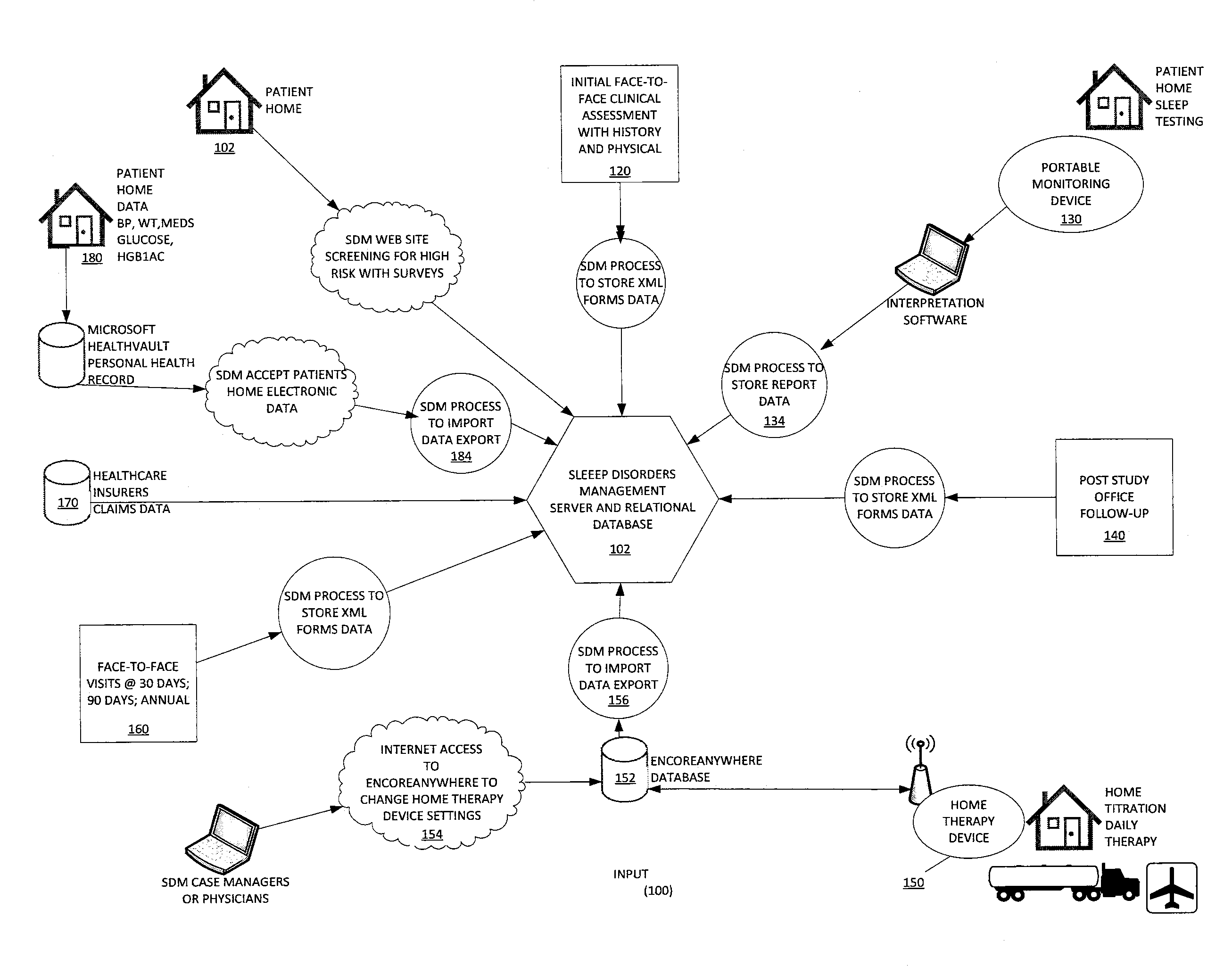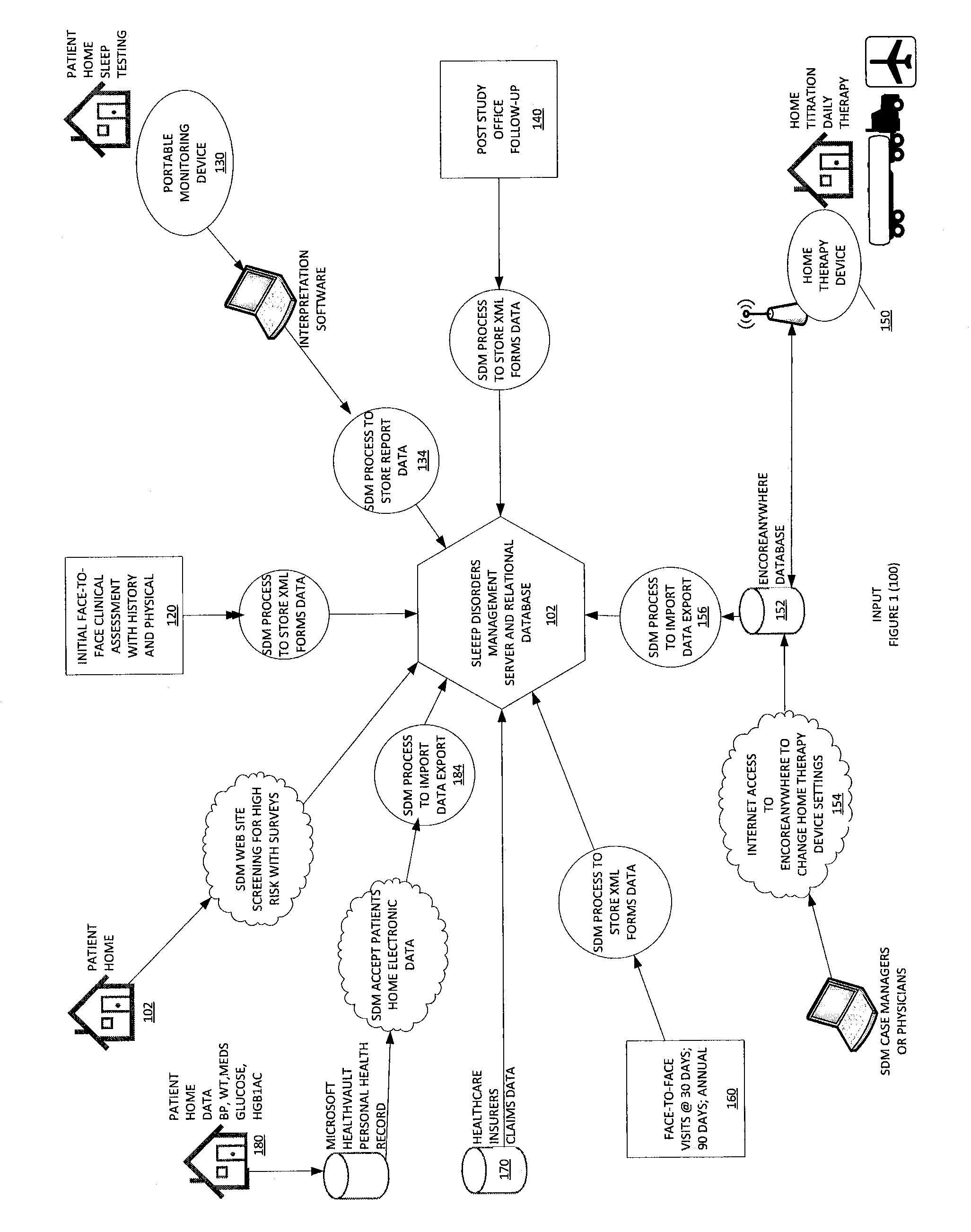Systems and methods for diagnosing and treating sleep disorders
a technology of sleep disorder and system, applied in the field of autotitrator, can solve the problems of obstructive sleep apnea prevalence, significant health care cost increase, disability, stroke, etc., and achieve the effect of reducing sleep events and reducing sleep events
- Summary
- Abstract
- Description
- Claims
- Application Information
AI Technical Summary
Benefits of technology
Problems solved by technology
Method used
Image
Examples
Embodiment Construction
[0028]The various aspects of the present invention relate generally to novel methods and systems for diagnosing and treating sleep disorders, especially obstructive sleep apnea. Electronic data is collected from home devices and from multiple sources. Computer applications create a real-time personalized dashboard of unique reports and indices in a secure web site. The methods provide care management with unique quality scores and programmed “Therapy Interventions.” Home sleep therapy data is populated into personal electronic medical records. The present invention provides a complete sleep disorder management program built around a novel methodology combined with HITECH solutions. The new best practices disclosed herein are designed to change the clinical practice paradigms for sleep disorders.
Input Sources of to the Present Invention
[0029]Referring now to the drawings, FIG. 1 illustrates the multiple input sources 100 incorporated by the present invention. Each of the individual s...
PUM
 Login to View More
Login to View More Abstract
Description
Claims
Application Information
 Login to View More
Login to View More - R&D
- Intellectual Property
- Life Sciences
- Materials
- Tech Scout
- Unparalleled Data Quality
- Higher Quality Content
- 60% Fewer Hallucinations
Browse by: Latest US Patents, China's latest patents, Technical Efficacy Thesaurus, Application Domain, Technology Topic, Popular Technical Reports.
© 2025 PatSnap. All rights reserved.Legal|Privacy policy|Modern Slavery Act Transparency Statement|Sitemap|About US| Contact US: help@patsnap.com



